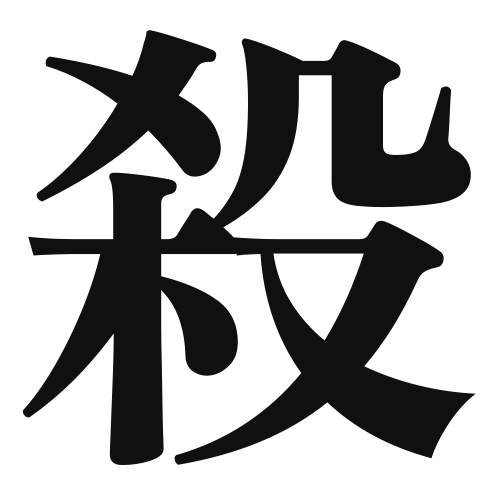1. Overview of Meaning
The kanji “殺” (satsu) means “to kill” or “to murder.” It conveys a strong sense of taking life and is often associated with violence or crime.
2. Formation and Radical
Formation of the Kanji: The kanji “殺” is a phonetic compound (形声文字), which combines the meaning of “death” (死) with a phonetic component that suggests its pronunciation.
Radical: The radical for “殺” is “死” (shi), which means “death.” This radical is often found in kanji related to death or killing.
3. Examples of Usage
Common Words and Phrases: Some common words that include “殺” are:
- 殺人 (satsujin) – murder
- 殺害 (satsugai) – killing
- 殺虫剤 (satchuzai) – insecticide
Example Sentences in Daily Conversation:
- 彼は殺人事件の容疑者です。 (Kare wa satsujin jiken no yougisha desu.) – He is a suspect in a murder case.
- この薬は虫を殺すために使います。 (Kono kusuri wa mushi o korosu tame ni tsukaimasu.) – This medicine is used to kill insects.
4. Synonyms and Antonyms
Similar Kanji: A similar kanji is “斬” (zan), which means “to cut” or “to behead.” While both involve taking life, “斬” emphasizes the method of cutting, whereas “殺” is more general.
Antonyms: An antonym for “殺” is “生” (sei), which means “to live” or “life.” This represents the opposite concept of killing.
5. Cultural and Historical Background
Relation to Japanese Culture: The concept of “殺” is deeply embedded in Japanese culture, often appearing in literature, films, and discussions about morality and justice.
Proverbs and Idioms: One common idiom is “殺生石” (sesshōseki), which refers to a stone that is said to kill living beings, symbolizing the inevitability of death.
